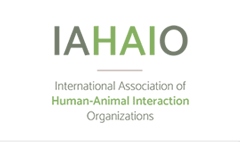Abstract
Dog welfare and occupational stress of animal shelter workers at two sites on Hawaii Island were examined. The east side had higher euthanasia rates than the west side. The two sites are in locales that differ culturally and economically. The goal of this study is to (1) elucidate how dog culture differs at the two sites and how those differences affect the health of dogs, and (2) assess the stress levels of shelter workers who must simultaneously care for the dogs while often having to euthanize them. Interviews and cortisol were obtained from the shelter workers and cortisol was obtained from the shelter dogs. Cortisol is a stress hormone that can be measured in human and dog hair. The shelter workers and dogs in the east side of the island’s high-euthanasia shelter had significantly higher cortisol rates than their counterparts in the west side’s lower euthanasia shelter (t = 6.051, df = 13, p = 0.001 for the shelter workers and t = 2.412, df = 42, p = 0.010 for the dogs). Traditional and contemporary attitudes toward dogs as commodities to be kept as guard dogs or for hunting do not include spaying/neutering, resulting in unsustainably high numbers of discarded dogs entering shelters. Shelter employees care for animals that they are then forced to euthanize, referred to as the “caring-killing paradox.” Shelter workers consequently withstand the worst of negative public perceptions of the high euthanasia rate for what is in actuality a community problem. I suggest that differing cultures of attitudes toward dogs negatively affect the health and welfare of both shelter employees and dogs. Decreasing the dog overpopulation through spaying/neutering and a cultural shift in the attitude toward dogs would improve the health and well-being of the dogs and the shelter workers.
Recommended Citation
Morrison, Lynn
(2023)
"It’s Not Paradise for the Dogs and Shelter Workers: Dog Welfare and Occupational Stress in Animal Shelters in Hawaii,"
People and Animals: The International Journal of Research and Practice: Vol. 6
:
Iss.
1,
Article 11.
Available at:
https://docs.lib.purdue.edu/paij/vol6/iss1/11


